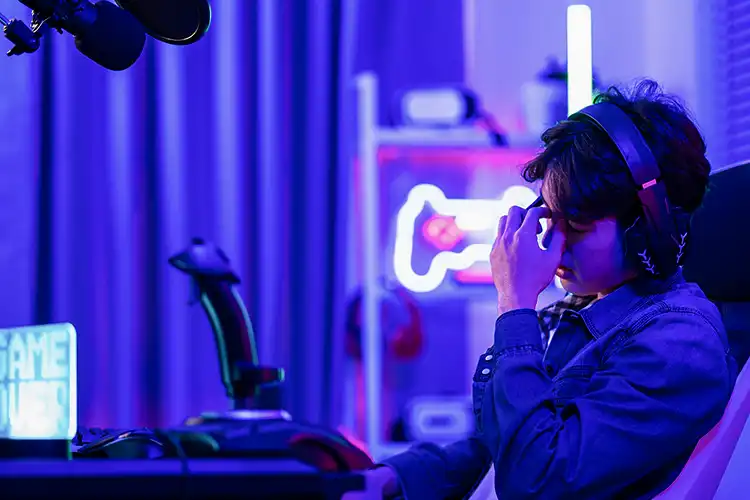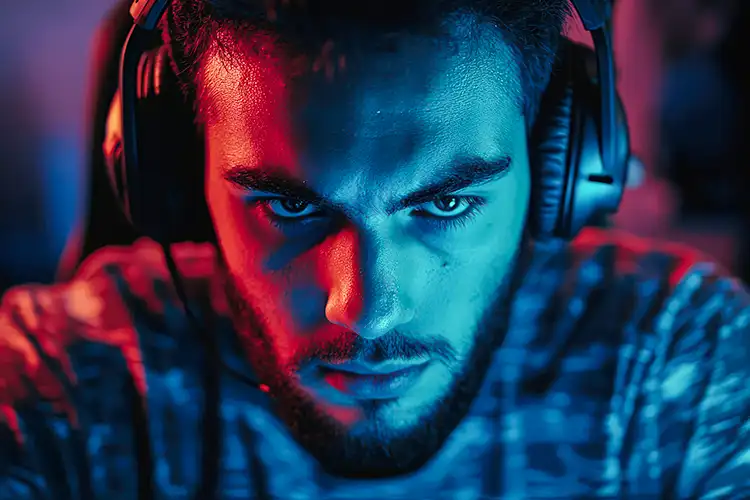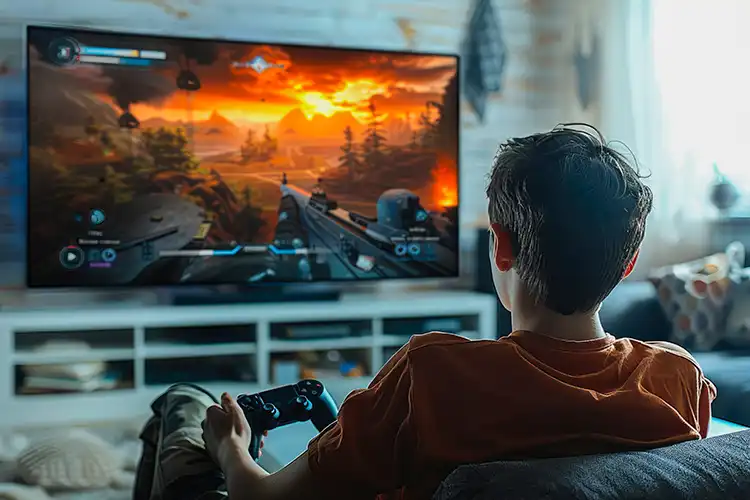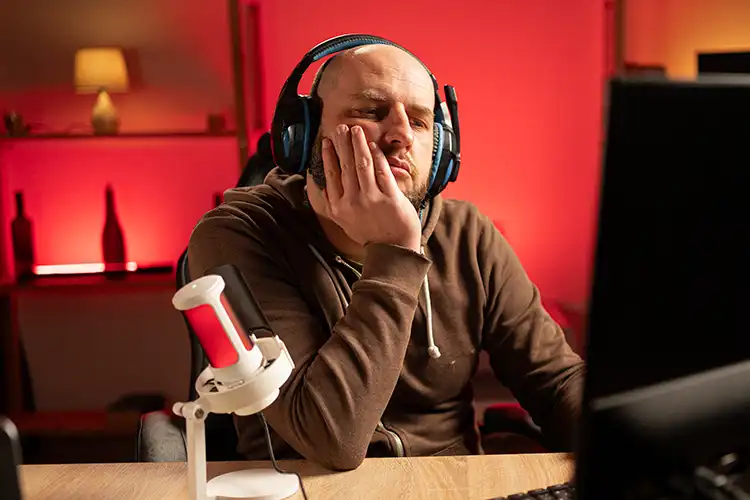
Hair Loss in the Gaming and eSports Communities
Nowadays, gaming and eSports are big business, with the global eSports market projected to net $4.8 billion USD in 2025. As a booming business, many young gamers aspire to go pro in the industry and enjoy the wealth and fame it provides. However, eSports fame isn’t all fun and games, and there could be adverse health effects.
Poor hair health, in particular, appears to be a prevalent issue within the gaming and eSports community. In this article, we’ll be looking at why eSports can cause hair loss, if eSports players are suitable candidates for hair transplants, and what other solutions are available.
- Why Are Gamers Particularly Susceptible to Hair Loss?
- Hormonal Changes due to Long Screen Times
- Ergonomics & Circulation – Why Sitting Posture While Gaming Can Influence Hair Loss
- Specific Solutions for Gamers: How to Prevent Hair Loss
- Hair Transplantation as a Long-Term Solution for Gamers with Hair Loss
- Conclusion: Hair Transplants are a Champion Solution
- FAQs
Why Are Gamers Particularly Susceptible to Hair Loss?

There are many causes for hair loss. In a lot of cases, it comes down to genetic predispositions (androgenetic alopecia) and simply ageing. While these factors could very well be at play with regards to eSports gamers and hair loss, there are other factors that are specific to gaming that could contribute to poor hair health.
Chronic Stress and Performance Pressure
Like traditional sports, eSports is competitive. Lucrative sponsorship deals depend on success in tournaments, which can put players under immense pressure to perform well. Even those who do not play professionally often spend hours honing their skills. This pressure to succeed, even on an amateur level, can contribute to high levels of stress.
Stress causes the body to produce the hormone cortisol. Cortisol has been linked with impeded hair growth in studies, and can result in stress-induced hair loss known as telogen effluvium.
Lack of Physical Activity and Unhealthy Diet
Gaming is predominantly a sedentary activity. Gamers will often sit in the same spot for hours at a time with little movement. The long hours often mean sacrificing regular mealtimes and a dependency on convenient fast food with little nutritional value.
Vitamin deficiencies—particularly in biotin, iron, and zinc—and an unbalanced diet can slow hair growth and lead to increased hair loss.
Sleep Deprivation Due to Extended Gaming Sessions
It is not uncommon for gamers to play into the early hours of morning, and intense periods of gaming have been previously linked to poor sleep. The resulting sleep deprivation can affect various bodily functions, including hair growth.
During sleep, the body undergoes regeneration, including hair follicles. Lack of sleep can disrupt the hair cycle and promote hair loss.
Headphone Pressure on the Scalp (“Headset Hair”)
Many gamers wear heavy headphones for extended periods, exerting pressure on the same area of the scalp. This pressure can lead to reduced blood flow to hair follicles, potentially resulting in localised hair loss or traction alopecia.
Hormonal Changes due to Long Screen Times
Gaming can not only increase stress levels but also have a lasting impact on hormone levels. The combination of long screen time, lack of exercise, and high mental pressure, in particular, leads to hormonal reactions in the body that can promote hair loss.
During intense gaming sessions or competitions, the body is often in constant stress mode. The stress hormone cortisol is released in increased amounts and can affect the balance between testosterone and DHT . DHT is one of the main causes of androgenetic alopecia (hereditary hair loss) because it causes hair follicles to shrink over time. Persistently elevated cortisol levels can therefore accelerate hair loss.
Ergonomics & Circulation – Why Sitting Posture While Gaming Can Influence Hair Loss

Many gamers spend hours in the same sitting position, often with a hunched neck and a hunched back. What many don’t realize is that poor posture and a lack of exercise can impair blood circulation to the scalp, thus promoting hair loss.
- Poor posture & restricted circulation: Playing for hours with your head tilted forward and your shoulders tensed risks reduced blood flow to the scalp. Hair follicles depend on an optimal supply of nutrients from the bloodstream – if this supply is restricted, hair can become thinner or fall out.
- Neck tension & pressure on the scalp: A rigid sitting posture can also cause neck tension, which affects the blood circulation in the entire head area.
Sitting upright, doing regular neck stretches and taking short breaks to move can help improve blood circulation and keep the scalp healthy.
Specific Solutions for Gamers: How to Prevent Hair Loss

To counteract hair loss, gamers can adopt several strategies:
- Stress Management: Incorporate relaxation techniques such as meditation or yoga into daily routines to reduce stress levels.
- Balanced Diet: Ensure a diet rich in vitamins and minerals essential for hair health, including biotin, iron, and zinc.
- Regular Physical Activity: Engage in regular exercise to improve overall blood circulation, benefiting hair follicles.
- Adequate Sleep: Maintain regular sleep patterns to support the body’s regenerative processes, including hair growth.
- Ergonomic Equipment: Opt for lightweight headphones and take regular breaks to relieve pressure on the scalp.
Hair Transplantation as a Long-Term Solution for Gamers with Hair Loss

While some causes of hair loss—such as stress or nutrient deficiencies—can be positively influenced through lifestyle changes, there are forms of hair loss that are irreversible. Androgenetic alopecia in particular affects many young men—including those in the gaming community.
The first signs of hair loss can be gradual: a receding hairline, thinning patches on the crown, and thinning hair that are almost impossible to conceal. Especially in an industry dominated by social media and livestreams, this loss of self-confidence can be devastating.
Modern technologies for natural and long-term hair growth
Thanks to advanced methods like the DHI technique, a hair transplant can permanently restore the appearance of your hair. To understand how the procedure works, what results to expect, and why Turkey is a leading destination for this treatment, you can learn more with our guide to hair transplants in Turkey. Unlike short-term solutions like hair thickening sprays or wigs, it offers a truly natural, growing result.
The precise removal and implantation of the hair creates a harmonious hairline that adapts perfectly to the natural appearance – no artificial look, no “plug” effect.
Conclusion: Hair Transplants are a Champion Solution
While lifestyle adjustments can mitigate hair loss, they may not suffice for everyone. In such cases, hair transplantation emerges as an effective and lasting solution, enabling gamers to regain both their hair and confidence.
By acknowledging the unique challenges faced by the gaming and esports community, targeted strategies can be developed to maintain both performance and health.
FAQs
Are there any statistics on how many gamers experience hair loss compared to the general population?
There are currently no official statistics that quantify hair loss specifically among gamers. However, due to their lifestyle habits—such as poor sleep, high stress, and sedentary routines—gamers may be at a higher risk than the general population, especially if they are genetically predisposed to hair loss.
At what age do gamers typically start noticing hair loss symptoms?
Hair loss in gamers, particularly those affected by androgenetic alopecia, can begin as early as their late teens to mid-20s. This is often the time when many gamers enter the professional scene and encounter lifestyle stressors that may accelerate hair thinning.
Are female gamers affected by hair loss in the same way?
Yes, female gamers can also experience hair loss, though the patterns differ. Women are more likely to experience diffuse thinning across the scalp rather than receding hairlines. Stress, sleep deprivation, and hormonal imbalances affect both genders.
How does hair loss impact gamers’ careers or personal branding?
In an industry where livestreams and social media visibility are crucial, appearance can impact confidence and public perception. Hair loss may negatively affect a gamer’s self-esteem and potentially influence sponsorship opportunities, which often rely on marketable image and personality.
Is there a recommended age or condition for when a gamer should consider a hair transplant?
Hair transplants are typically recommended once hair loss has stabilised—often around the age of 25 or older—to ensure lasting results. A consultation with a specialist is crucial to assess scalp health, donor hair availability, and whether the candidate is suitable.
How long does it take to see results after a hair transplant?
Most patients begin to see new hair growth around 3 to 4 months after the procedure, with full results visible within 12 to 18 months. This timeline may vary depending on the technique used and individual healing factors.
Can gaming habits continue post-transplant, or do they need to be modified?
Gamers can resume their usual routines after a short recovery period. However, it’s advisable to avoid wearing heavy headsets or straining the scalp for at least a few weeks post-transplant. Maintaining a healthy lifestyle also supports better long-term results.
Are there non-surgical treatments that can support gamers before opting for a transplant?
Yes, options such as PRP (Platelet-Rich Plasma) therapy, topical treatments like minoxidil, and oral medications such as finasteride can slow hair loss and stimulate growth. These should be discussed with a medical professional for individual suitability.
Does prolonged screen exposure itself cause hair loss, or is it more about the indirect effects?
Prolonged screen time does not directly cause hair loss. However, it contributes to stress, sleep disturbances, and hormonal imbalances—all of which can negatively affect hair health.
Can improving gaming ergonomics alone prevent hair loss?
While better ergonomics can improve blood circulation and reduce tension, they are unlikely to prevent hair loss entirely on their own. They should be combined with other lifestyle improvements for more significant results.


